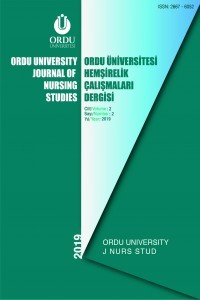
Ordu Üniversitesi Hemşirelik Çalışmaları Dergisi
Yazarlar: Burcu KÜÇÜKKAYA, Hatice KAHYAOĞLU SÜT
Konular:Hemşirelik
DOI:10.38108/ouhcd.709586
Anahtar Kelimeler:Pelvic floor disorders,Traditional and complementary therapies
Özet: Pelvic floor disorders affect millions of women living throughout our country and the world. The prevalence of pelvic floor disorders increases with many factors such as age, obesity, menopause, smoking, number of births and mode of delivery. Pelvic floor disorders (urinary/fecal incontinence, pelvic organ prolapse, chronic pelvic pain, sexual dysfunction) adversely affect women, their families and caregivers of inviduals who cannot meet their needs and society in many ways. Pelvic floor disorders are costly on a community basis. The treatment of the symptoms of pelvic floor disorders is carried out in an efficient way with the use of non-pharmacologically traditional and complementary therapies instead of early invasive or pharmacological treatment. This study was carried out systematically in order to determine the traditional and complementary therapies in pelvic floor disorders. It has been determined that pelvic floor muscle exercises and acupuncture are used in the treatment of incontinence, prolapse and sexual dysfunction; yoga, abdominal exercises, massage and energy therapies are used in the treatment of incontinence; pilates is used to increase pelvic floor muscle strength. Gua Sha has been used for the treatment of pelvic pain. With the use of traditional and complementary therapies, individuals with pelvic floor disorders will increase both their quality of life and their participation in the treatment process. Nurses who are members of a multidisciplinary team and specialize in urogynecology should have important roles in the care and treatment of women with pelvic floor disorders and should have knowledge of traditional and complementary therapies.